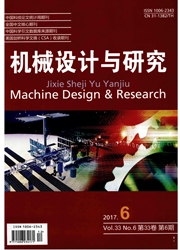

 中文摘要:
中文摘要:
在金属粉末高速冲击压制中,颗粒间的高速碰撞是一个重要因素,研究其相互间的碰撞接触力传递过程是个难点。研究采用基于离散单元法(DEM)的PFC2D颗粒流程序,从微观层面着手,建立三颗粒碰撞模型,探讨碰撞过程中摩擦因素、碰撞速度、剪切模量对接触力传递的影响规律。研究发现,颗粒在碰撞过程中会发生转动,在碰撞的起始及收尾阶段,颗粒处于滑动摩擦状态,而中间阶段则因处于静摩擦状态,颗粒发生了转动。数值模拟结果表明:模壁摩擦系数几乎不影响颗粒的接触力及碰撞时间,而颗粒间的摩擦系数会同时影响法向及切向接触力的大小;碰撞速度越大,颗粒间法向重叠量就越大,相应的接触力峰值也越大;剪切模量的不同也会影响到颗粒间接触力的传递情况。这些结果可对金属粉末高速压制致密化机理的微观研究提供一定的指导作用。
 英文摘要:
英文摘要:
During the process of metal powder high velocity impact compaction, high speed collision between particles is an important factor, and the study on the transformation of collision contact force is a difficult problem. In order to accomplish the numerical simulation, the DEM (discrete element method)-based software PFC2D was used. Based on the micromechanics approach, we established the three particle collision model, and discussed the influence of friction coefficient, collision speed, shear modulus on the contact force transformation during the collision process. Study found that particles would rotate during the collision, and that particles were in the sliding friction state during the starting and ending stage of the collision, while in the static friction state which rotation occurred during the intermediate stage. Numerical simulation results show that the mold wall friction coefficient has little effect on the contact force and the particle collision duration, while the inter-particle friction coefficient will affect the normal and tangential contact force simultaneously; The greater collision speed, the greater overlap between particles, and the corresponding peak contact force will also become greater; Different shear modulus can also affect the transfer of contact force. These results could provide certain guiding role for the micro research of densification mechanism during the metal powder high velocity compaction process.
 同期刊论文项目
同期刊论文项目
 同项目期刊论文
同项目期刊论文
 期刊信息
期刊信息
